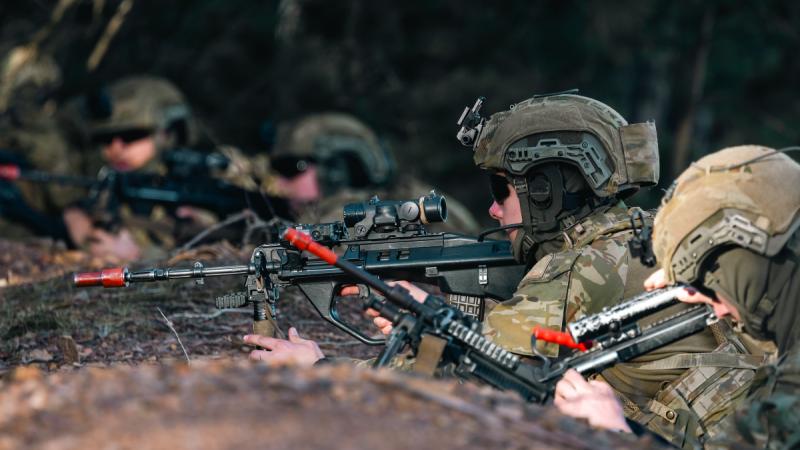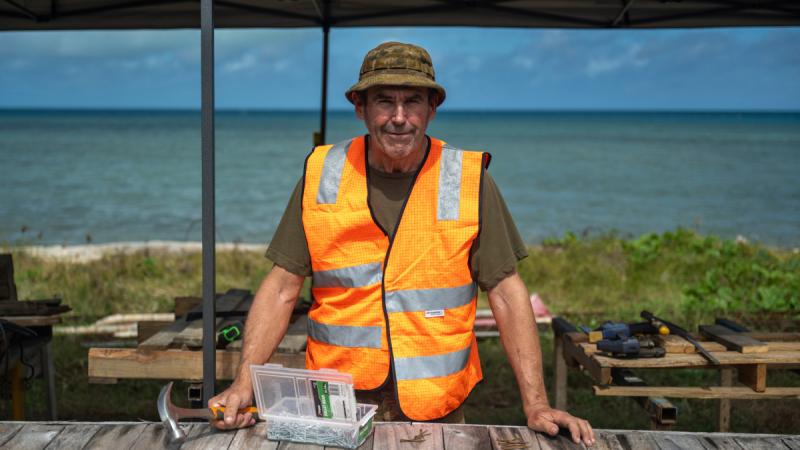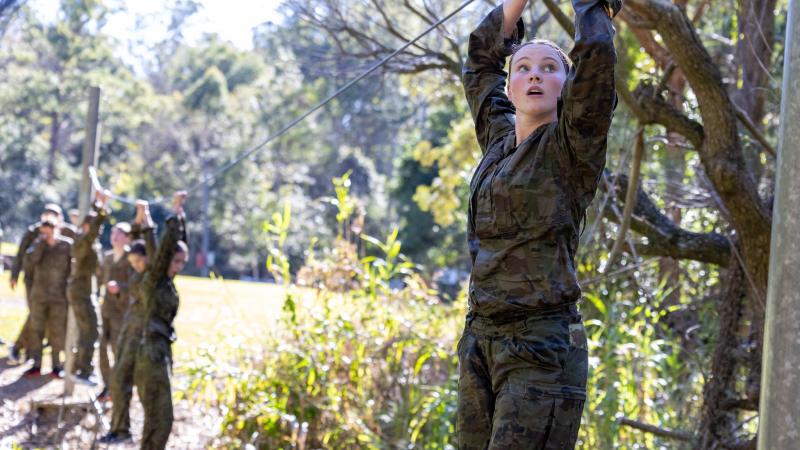30 August 2024
While all seems quiet around the remote community of Amata in the north-west corner of South Australia there’s a hive of activity at the Army construction site on the outskirts of the town for the Army Aboriginal Community Assistance Program (AACAP).
After four months of building works, it’s all hands on deck as tradespeople from Army’s 6th Engineer Support Regiment, Air Force’s 65 Squadron, the School of Military Engineering and the Republic of Fiji Military Forces finish the job.
Sapper Johnny Vlasic arrived at Amata in May as the lead plumber for the main community-driven construction project - the service provider accommodation.
“When I arrived the plant operators had already compacted the pads for the three buildings so we spent the first few weeks laying out the water and sewer lines while the electricians installed conduit,” Sapper Vlasic said.
“We planned the building works so we could be working two crews - but not all on the same building at any one time - to keep moving forward and maximise efficiency.”
Once the construction works are complete, the community of Amata will have three separate single-storey buildings with nine self-contained units for visiting service providers and contractors, increasing the length of time they’ll be able to spend in the community.
Each unit will have a bedroom, kitchenette and a bathroom, while one of the three buildings will also have an accessible self-contained unit and an accessible two-bedroom unit, as well as a communal laundry.
“They say AACAP is a great training aid and they’re not wrong,” Sapper Vlasic said.
“Our trade skills developed because of the quality control standards we needed to adhere to.
“If something wasn’t perfect, 19th Chief Engineer Works would want us to do it again.”
Construction of the accommodation is expected to finish in September, and will be used by visiting service providers such as health professionals, contractors and government workers.
“It’s a satisfying feeling that you get to help someone out, even if it’s just somewhere for them to sleep,” Sapper Vlasic said.
“We’ve had some really long days, and I’ve relied heavily on the apprentices from the School of Military Engineering and the tradies from 65 Squadron.
“The Fijians are also great to work with – they’re so nice, those guys. They’re always happy and work very hard while sharing their culture with us.”
“It’s a satisfying feeling that you get to help someone out, even if it’s just somewhere for them to sleep."
As a plant operator, Lance Corporal Dion Toms is proud to be working on a construction task that delivers a tangible solution for a remote community in need.
Lance Corporal Toms is also appreciating the opportunity to spend time in the red centre of Australia.
“One of the biggest selling points of AACAP beyond the construction element is seeing places you would never usually get to see and spend time in,” Lance Corporal Toms said.
“You also get to work on an end product that you can actually see rather than just fill in the tank ditches you dug for a combat exercise.”
Having prepared the site around the service provider accommodation for the fencing contractors and built the car parks for the self-contained units, Lance Corporal Toms is preparing the site so the local community development program can plant native trees and gardens once the construction works are complete.
“This is what we signed up to do in Army and we don’t get to do this sort of construction work back in barracks. To get proper construction experience you need to do an AACAP,” he said.


